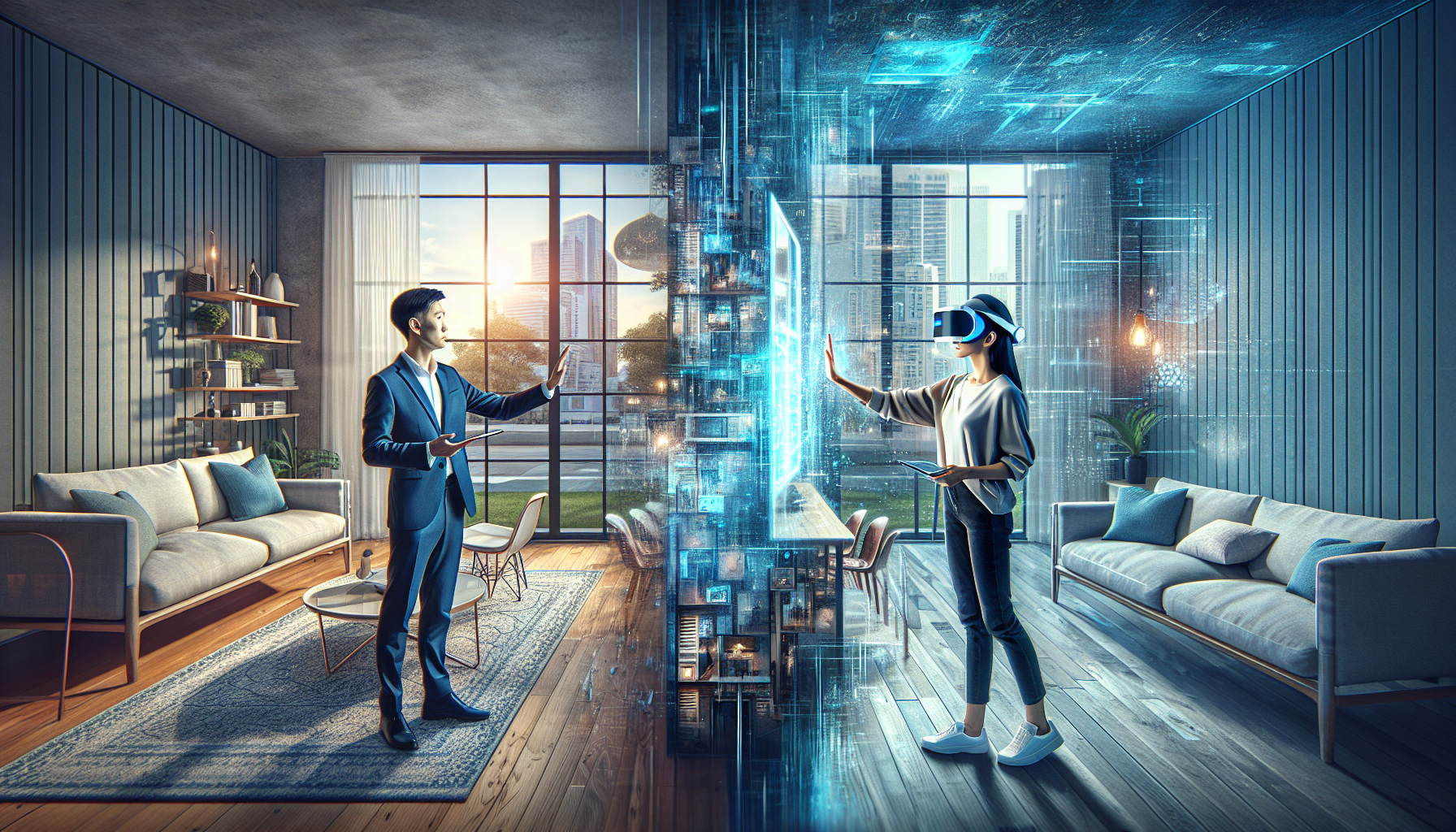How Virtual Reality Real Estate is Revolutionizing Home Tours
We're witnessing a revolution in the real estate industry, and it's all thanks to virtual reality.


We're witnessing a revolution in the real estate industry, and it's all thanks to virtual reality. As technology continues to advance, we're seeing virtual reality real estate transform the way we buy and sell homes. This exciting development is changing how we view properties, making the process more convenient and immersive for both buyers and agents.
In this article, we'll explore the rise of virtual reality in real estate and how it's reshaping property tours. We'll dive into the workings of VR home tours, highlighting the key features that make virtual property showings stand out. We'll also look at the challenges facing this technology and what the future might hold. From virtual reality headsets to 360-degree cameras and virtual staging, we'll cover all the tools that are making VR tours a game-changer in the real estate world.
The Rise of Virtual Reality in Real Estate
What is VR real estate?
Virtual reality real estate is a groundbreaking technology that's transforming the way we buy, sell, and experience properties. It involves creating immersive 3D environments that allow potential buyers to explore homes and buildings without physically being there. This innovative approach uses virtual reality headsets and 360-degree cameras to capture and present properties in a lifelike, interactive format.
VR real estate offers a unique opportunity for buyers to virtually walk through properties, examine details, and get a feel for the space from anywhere in the world. It's not just about viewing existing properties; VR also enables the visualization of properties that haven't been built yet, giving developers and investors a powerful tool to showcase future projects.
Growth of VR home tours
The adoption of virtual reality in real estate has seen remarkable growth in recent years. According to industry reports, the global VR market in real estate is expected to reach a value of $3,161.2 million by 2025, with a projected compound annual growth rate (CAGR) of approximately 38%. This rapid expansion is driven by changing consumer preferences and technological advancements.
A significant shift in buyer behavior is evident, with 77% of clients expressing a strong desire to experience virtual reality tours before physically visiting a property. This statistic highlights the growing importance of immersive experiences in influencing purchasing decisions in the real estate market.
The COVID-19 pandemic has further accelerated the adoption of VR tours, as they provided a safe and convenient way to continue property viewings during lockdowns. Even as restrictions have eased, the benefits of VR tours continue to resonate with both buyers and sellers.
Benefits for buyers and sellers
Virtual reality real estate offers numerous advantages for both buyers and sellers. For buyers, VR tours provide the convenience of exploring properties from the comfort of their own homes, saving time and eliminating geographical barriers. They can view multiple properties in a single day without the need to travel, helping them narrow down their options more efficiently.
Sellers benefit from VR technology by reaching a wider audience of potential buyers. Virtual tours allow properties to be showcased 24/7, reducing the need for physical open houses and minimizing disruptions to the seller's daily life. Additionally, VR staging enables sellers to present their properties in the best possible light, even if the physical space is empty or in need of renovation.
Real estate agents also reap the rewards of VR technology. It allows them to handle more listings and cater to clients from different locations, potentially increasing their reach and sales. Virtual tours can help agents pre-qualify buyers more effectively, ensuring that only serious prospects visit properties in person.
As virtual reality technology continues to evolve, its impact on the real estate industry is set to grow even further. From enhancing property marketing to streamlining the buying process, VR is revolutionizing how we interact with and experience real estate.
How VR Home Tours Work
Virtual reality home tours are revolutionizing the way we explore properties. These immersive experiences allow potential buyers to walk through homes without physically being there. Let's dive into the key components that make VR tours possible.
360-degree cameras
At the heart of VR home tours are 360-degree cameras. These specialized devices capture every angle of a room in a single shot. Popular models like the Rico Theta X, Insta360 ONE RS, and Trizio Light 2 are commonly used in the real estate industry. These cameras are placed in the center of each room to capture a complete panoramic view.
The process is straightforward: the agent positions the camera, steps out of view, and triggers the shot remotely. Some cameras, like the Trizio Light 2, use a rotating mechanism to capture images, which takes about 20 seconds per shot. This method ensures high-quality, detailed images that form the foundation of the virtual tour.
3D modeling software
Once the 360-degree images are captured, 3D modeling software comes into play. This technology transforms the flat panoramic images into an interactive, three-dimensional environment. Programs like Autodesk Revit, SketchUp, and Rhino are popular choices for creating detailed 3D models of properties.
These software tools allow for the addition of interactive elements, such as hotspots and info spots. They also enable the creation of floor plans and even the conversion of 2D floor plans into 3D models. This step is crucial in creating a cohesive and navigable virtual environment that closely mimics the real property.
VR headsets and platforms
The final piece of the puzzle is the VR headset and the platforms that support virtual tours. Popular VR headsets like Oculus Rift, HTC Vive, and Samsung Gear VR provide an immersive experience, allowing users to feel as if they're physically present in the space.
However, VR tours aren't limited to headset users. Many platforms offer web-based experiences that work on any device with a web browser. This accessibility ensures that potential buyers can explore properties from their smartphones, tablets, or computers, making virtual tours widely available.
Platforms like Matterport and Shapespark have made it easier than ever to create and share virtual tours. These services often integrate with real estate websites, allowing for seamless embedding of tours into property listings. Some platforms even offer additional features like virtual staging, which allows empty spaces to be furnished digitally, helping buyers visualize the potential of a property.
The combination of these technologies has created a powerful tool for the real estate industry. Virtual reality tours offer a convenient, immersive, and detailed way for potential buyers to explore properties, saving time and resources for both buyers and sellers. As VR technology continues to advance, we can expect even more realistic and interactive virtual home tours in the future.
Key Features of VR Property Showings
Immersive walkthroughs
Virtual reality real estate has revolutionized property tours by offering immersive walkthroughs that transport potential buyers into the heart of a property. These virtual experiences allow clients to explore every nook and cranny of a home as if they were physically present. With VR tours, we've opened a portal to unparalleled visibility, transforming the real estate game into a vivid, 360-degree experience.
Using VR headsets or even just smartphones, users can step inside properties and feel their atmosphere. This technology enables us to showcase homes in ways that static images or videos simply can't match. The level of detail is astounding – clients can examine fixtures, take in the views, and get a true sense of the space's flow.
Interactive elements
What sets virtual reality tours apart is their interactive nature. Instead of being passive observers, potential buyers become active participants in the property viewing process. We've incorporated clickable hotspots throughout the tours, allowing users to access additional information, trigger pop-up images, or watch videos – all while remaining within the immersive environment.
These interactive features make the experience more engaging and informative. For instance, clients can click on a kitchen appliance to learn about its specifications or tap on a window to see the view at different times of the day. This level of interactivity helps buyers connect with the property on a deeper level, making it easier for them to envision themselves living there.
Customization options
One of the most exciting aspects of VR property showings is the ability to customize the experience. We can tailor virtual tours to appeal to different types of buyers. For visual learners, we might focus on lighting, interior design, and zoom features. For those who prefer hard data, we can include pop-up windows with detailed facts, statistics, and measurements.
But the customization doesn't stop there. We've incorporated features that allow potential buyers to make the space their own. They can change wall colors, swap out flooring materials, or even rearrange furniture. This virtual staging capability is a game-changer, especially for properties that are empty or in need of renovation.
The customization options extend to the presentation of the property as well. We can add floor plans, maps, and video walkthroughs to enhance the tour. Descriptions and annotations highlight key features, ensuring that no selling point goes unnoticed.
By offering these immersive walkthroughs, interactive elements, and customization options, virtual reality is transforming how we showcase and experience properties. It's not just about viewing a house; it's about experiencing a potential home. As VR technology continues to evolve, we expect these features to become even more sophisticated, further revolutionizing the real estate industry.
Challenges and Future Outlook
Accessibility issues
While virtual reality real estate has made significant strides, accessibility remains a concern. Not all potential buyers have access to VR headsets or devices, which can limit the reach of this technology. The initial costs associated with implementing high-quality VR content can be substantial, ranging from $3000.00 to $5000.00 for a basic VR tour of a single property. This investment might be challenging for smaller real estate agencies or individual agents.
Moreover, the technology itself can present barriers for users with disabilities. For instance, people with visual impairments might struggle with VR environments that don't allow for text size adjustments or increased contrast. Those with hearing disabilities might miss crucial audio cues in VR tours. Users with motor disabilities may find it difficult to navigate VR environments that require specific head or body movements.
Accuracy concerns
Despite the immersive nature of VR tours, there's still a potential for discrepancies between the virtual and physical experiences of a property. While VR provides a comprehensive view, it may not fully capture the ambiance, space, and surrounding neighborhood. This limitation underscores the continued importance of in-person viewings as a complement to virtual tours.
Another accuracy concern stems from the quality of the VR content itself. Poorly designed or laggy VR tours can reduce engagement and potentially discourage clients. Ensuring high-quality, detailed VR experiences is crucial for maintaining accuracy and user interest.
Potential for wider adoption
Despite these challenges, the future of virtual reality in real estate looks promising. As VR technology becomes more accessible and affordable, we expect to see its adoption spread beyond high-end properties to more ordinary markets. This shift has the potential to make the property buying process more inclusive and accessible to a wider range of customers.
Advancements in VR technology are set to enhance the user experience significantly. For example, the introduction of devices like the Apple Vision Pro, with improved graphic quality, could lead to a more emotionally impactful virtual viewing experience. As VR headsets become lighter and more affordable, the user base for this technology is likely to expand.
The integration of artificial intelligence and machine learning with VR tours offers exciting possibilities. These technologies can personalize the customer experience by suggesting properties based on consumer preferences and trends. Additionally, the use of big data and predictive analytics in conjunction with VR can transform how properties are marketed and priced, enhancing competitiveness and efficiency in the industry.
As we look to the future, the potential for VR in real estate seems boundless. From enhancing property marketing to streamlining the buying process, virtual reality is set to revolutionize how we interact with and experience real estate. The key to success will lie in overcoming the current challenges while continually innovating to meet the evolving needs of buyers and sellers in this dynamic market.
The Future
Virtual reality is causing a revolution in the real estate industry, transforming how we explore and experience properties. This groundbreaking technology has an impact on both buyers and sellers, making property tours more accessible, immersive, and efficient. As VR tools become more advanced and widespread, we can expect to see even more innovative applications in the real estate market.
Looking ahead, the future of VR in real estate seems bright, despite some challenges to overcome. As the technology becomes more affordable and user-friendly, it has the potential to make property hunting more inclusive and convenient for a wider range of customers. To wrap up, virtual reality is not just a passing trend but a game-changing tool that's reshaping the real estate landscape, offering exciting possibilities to enhance the property buying and selling experience.
FAQs
How is virtual reality utilized in the real estate sector?
Virtual reality in real estate is used by agencies to enhance customer engagement and minimize the costs associated with property visits. Agencies employ VR technology to present high-value properties such as multi-million-dollar apartments, bungalows, and lands in prime locations to prospective buyers using VR headsets.
What does a virtual tour in real estate entail?
A virtual tour in real estate is a digital simulation of a property that enables potential buyers to explore the property remotely from their homes. These tours usually feature 360-degree views or 3D representations, along with interactive elements and multimedia components, offering a detailed view of the property.
In what ways is virtual reality impacting the construction industry?
Virtual reality is significantly influencing the construction industry by enhancing design processes, improving project pitches, and boosting training and safety protocols. These advancements are currently being implemented by various companies, yielding considerable success.
How is virtual reality revolutionizing the travel industry?
Virtual reality is transforming the travel industry by providing virtual tours that allow potential travelers to experience destinations before booking their trips. This form of virtual tourism includes features like virtual hotel tours, enabling travelers to virtually visit and explore their intended destinations, thus aiding in their travel decisions.

